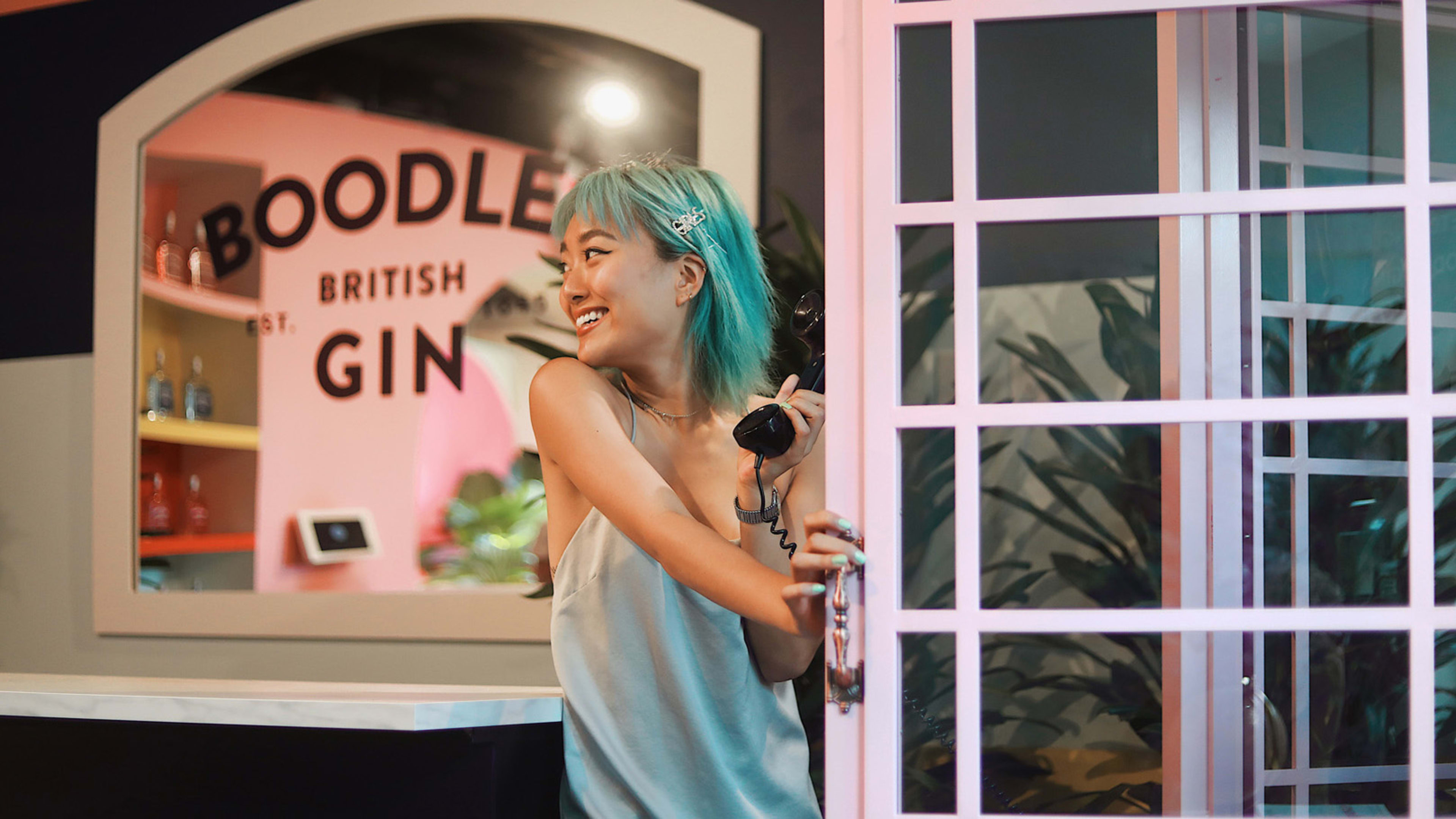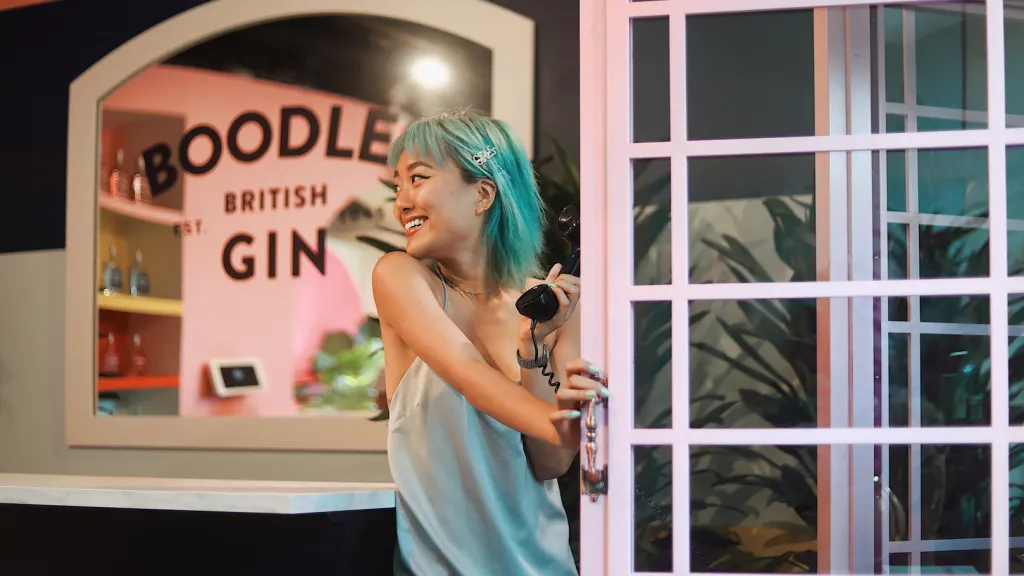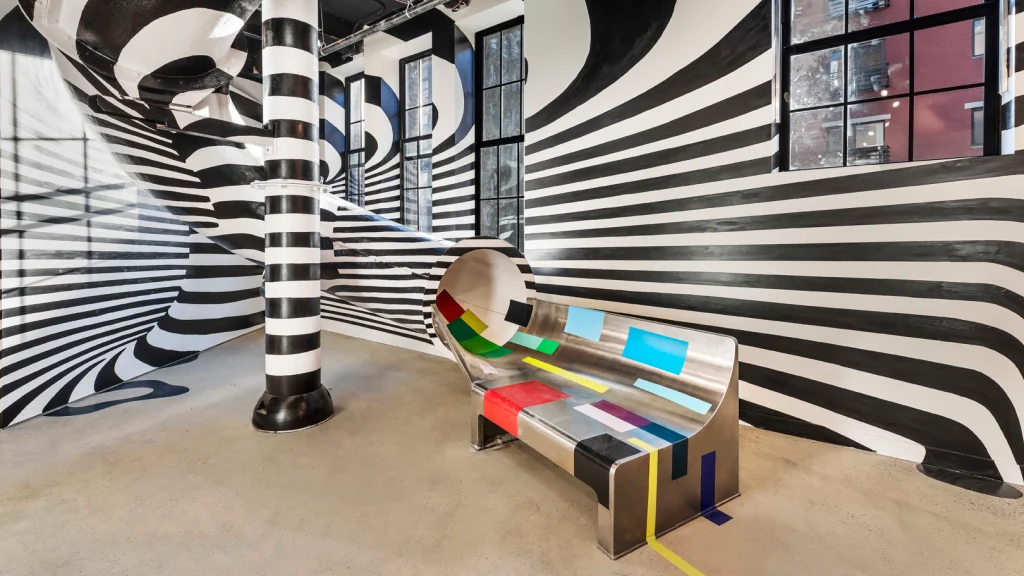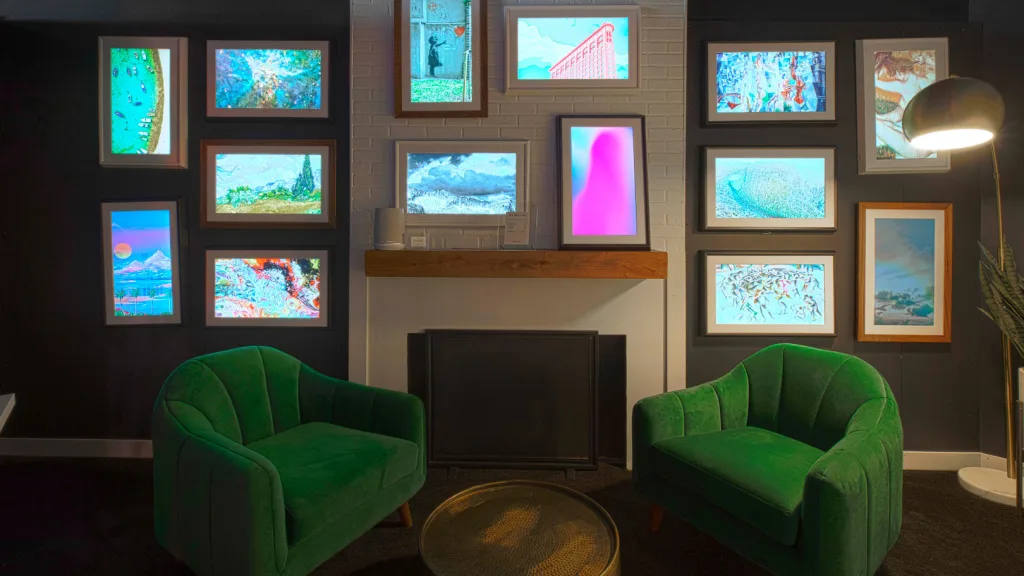It begins with a black-and-white-striped slide—like one you might see on a children’s playground. I have no idea where it goes. I’m nervous, but I’m not the only one. Two other people stand in the room with me. “I haven’t been on a slide since I was six,” one tells me. His friend assures him that it’s fine. She’s been here already.
Before I can overthink it too much, I swing myself onto the slide and skid all the way to the bottom. Then, I am suddenly in the midst of a faux forest, with strategically placed neon lights illuminating a room dotted with the trunks of real-looking birch trees. Moss hangs down from the ceiling. A woman dressed in all white with lab glasses pulls me over to sit on a log. She tells me she’s been working on a new formula. She dabs a bit of lotion onto the back of my hand and proceeds to tell me how it’s all-natural, plant-based, and vegan.
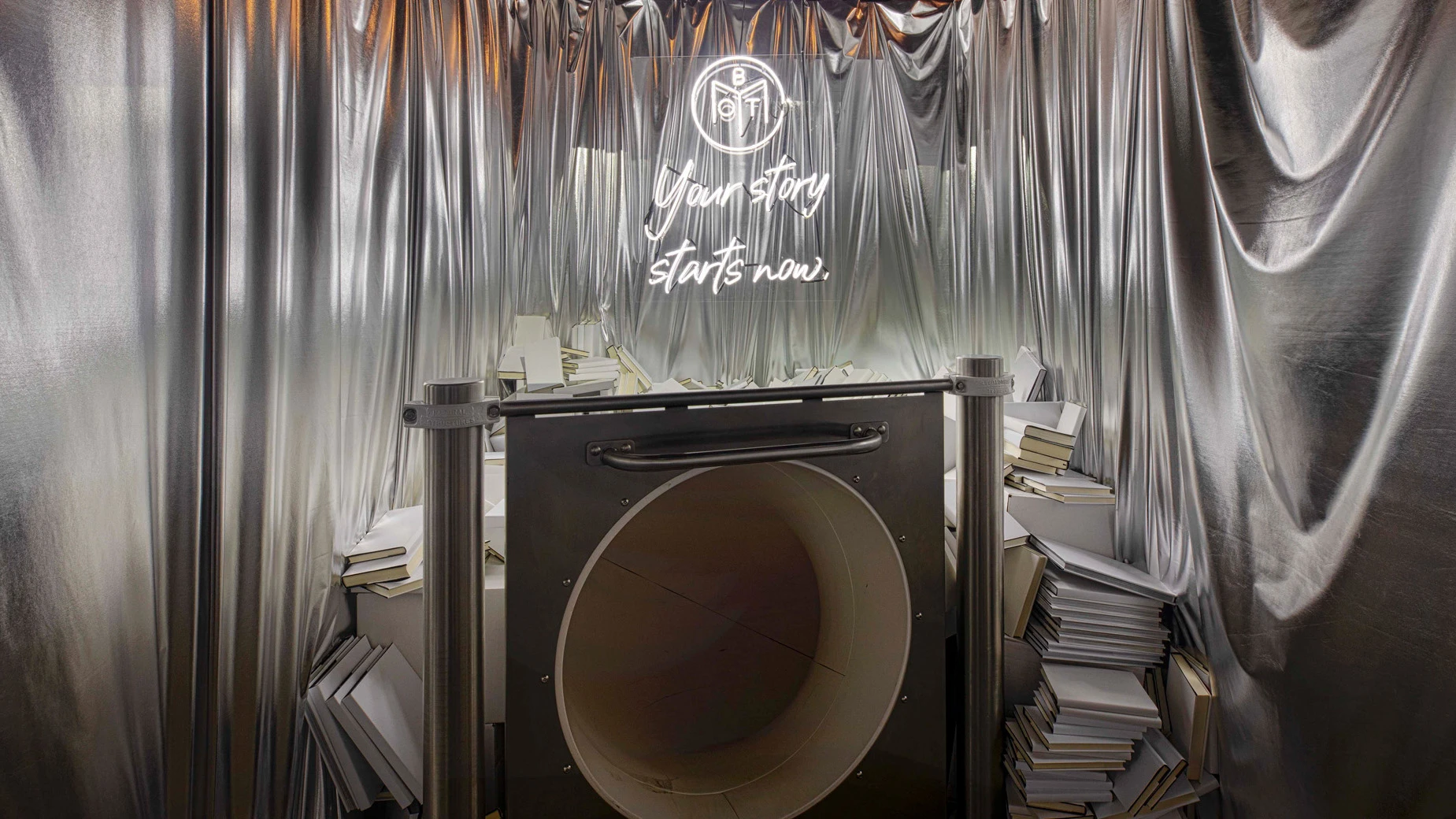
I’ve entered a quirky, consumerist version of Sleep No More located inside a giant, four-story store in SoHo called Showfields. It’s a Saturday afternoon, and this is an immersive theatrical performance called House of Showfields that the retail startup started running in July. It takes up the entire second floor of the store, while small pop-up storefronts dot the first and third floors.
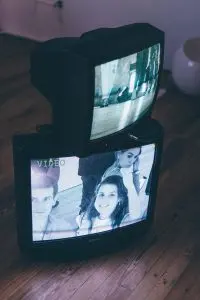
House of Showfields is still unlike anything I have ever experienced in a store. I emerge from the slide into the forest and then enter a full-on stage set meant to represent the house of Amelia Showfields, a character who is supposed to be the matron of the house (all the other characters work for her). As I wander between rooms, I am completely overwhelmed. There’s so much to look at, with installations everywhere (all with a retail tie-in) as well as pieces of visual art. An area meant to resemble a study has a wall full of $595 digital frames by the company Meural, and you can change the images by swiping your hand in front of the frame. Not everything is selling something: Showfields also asked bona fide artists to help design the installations. For instance, one wall is covered by video screens that show surveillance footage from different rooms in the house by the artist John Power.
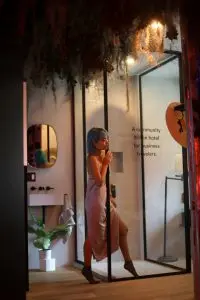
Regardless of whether people realize they’re being sold to or not, it’s working. “The Lab,” which is the more traditional store at the end of the experience where customers can shop the products they’ve just tried out, saw four times greater sales during House of Showfields’s opening weekend of July 20 and 21 compared to previous weekends. July’s 10,000 tickets, which people can reserve online for free, completely sold out before the show even started, and the rest of the store saw a 33% increase in people wandering through. Showfields has now extended the experience’s run until September 3.
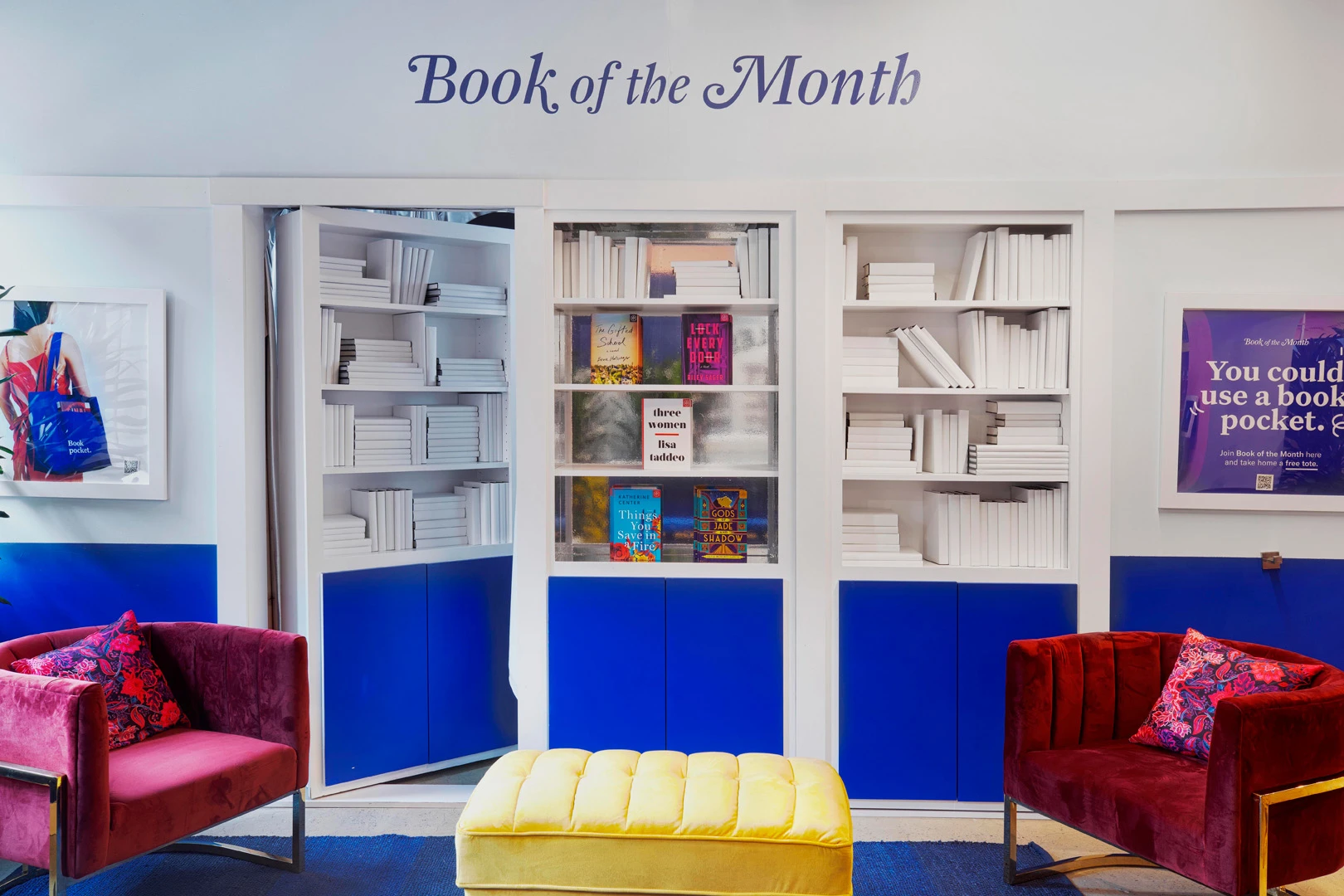
It’s been a wild first year for the retail startup, which first opened its doors in December 2018, billing itself as “the most interesting store in the world.” The goal? To make it easier for customers to discover new products they’ll actually like, according to Katie Hunt, Showfields’s cofounder and chief revenue officer. She describes how before the rise of online shopping, going to a store was like a scavenger hunt, where part of the fun was discovering new things. But now, it’s far easier—and less frustrating—to just order everything online. Yet Amazon and its ilk aren’t designed to help you discover new products that you might want to use. Meanwhile, small brands like the direct-to-consumer beauty company Nuria are finding it increasingly difficult and expensive to reach consumers and stand out amid all the other companies trying to grab a piece of consumers’ limited attention spans.
Showfields was designed to solve both these problems. By curating products for young, digitally savvy professionals (the store is mostly visited by women ages 24 to 36), the startup is hoping to make it easier for customers to find new brands they like while helping small companies to interact directly with their consumers. To do that, Showfields manages the entire retail process for them. Showfields designs and runs each small storefront inside the larger store, while providing the company data on how well all their products are doing by using heat maps that reveal what people are gravitating toward. In exchange for this service, companies pay Showfields a subscription fee of $6,000 to $12,000 a month, depending on where they’re located in the store, and keep all of their sales.
“It is of course about convenience for both the consumer and the brands, but it’s also bringing back that magic of what am I gonna find? What am I gonna see? I’ve never heard of this before,” says Hunt, who was the third employee at Warby Parker and is also a cofounder of the New-York-based venture-capital firm The Fund.
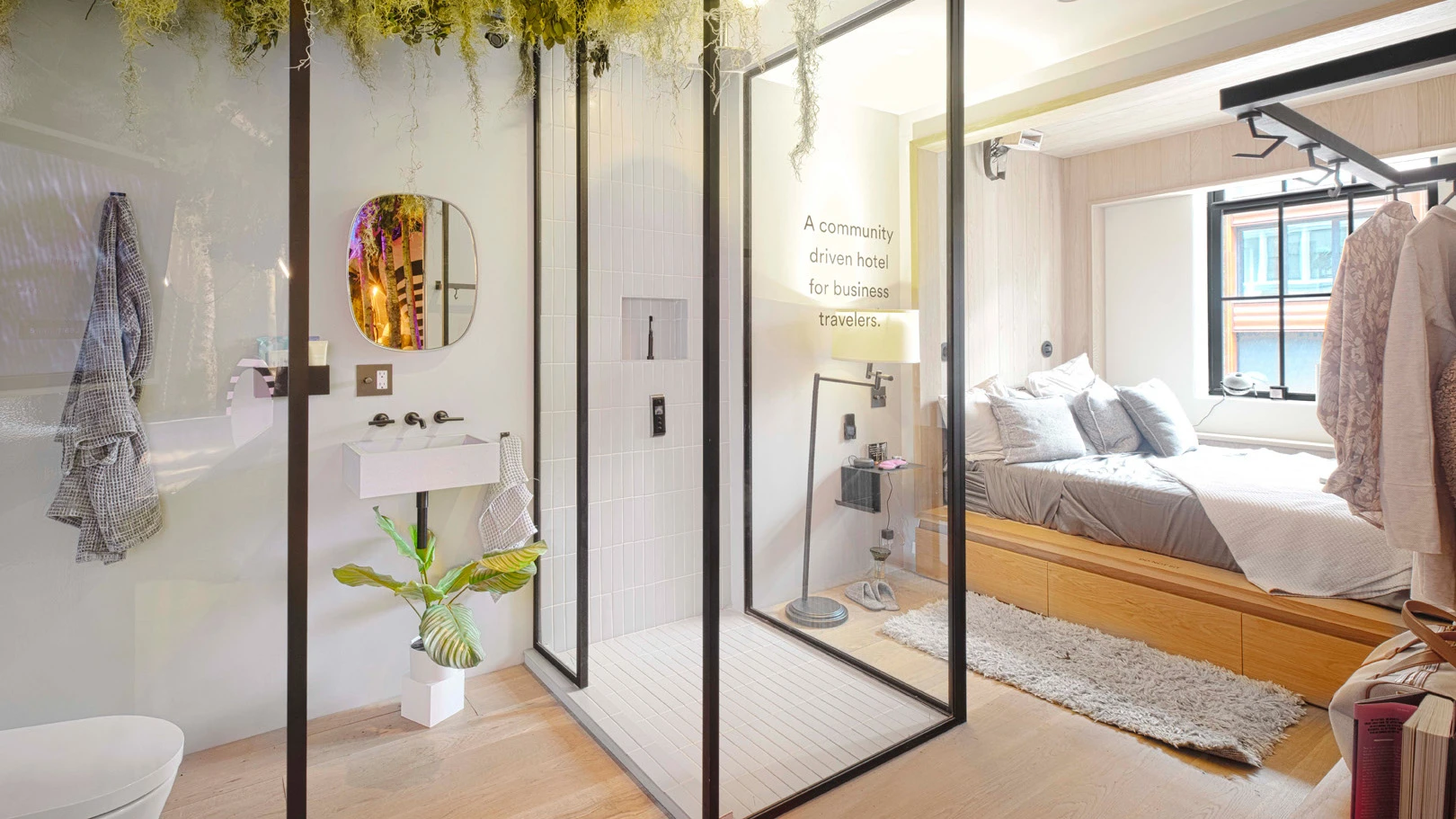
House of Showfields, which was dreamed up on a company retreat and put together in two months, takes this idea a step further. On Showfields’s first, more traditional retail floor, Nuria has a small setup where you can go to try their products. The retail startup says that on average, 50% of people who go into Showfields end up interacting with Nuria. But when people go through the House of Showfields, the company says that 100% of people are actively trying Nuria’s product, an exfoliator that literally takes off your top layer of skin. It’s a wild experience that I also tried: Lunardi, playing Miss Amelia Showfields, placed a dab on the back of my hand, and as I rubbed it around I felt all of the dead skin coming off. I was shocked and half-disgusted. But it was memorable.
Being part of the show is really paying off for Nuria: The company has seen its sales double during the show weekends versus previous weekends. “Once you try [Nuria’s products], you can’t go back from it—you don’t see anything else in the market,” says Hunt, who decided to include Nuria when House of Showfields opened and is such a big believer in its products that she says she has changed her entire skincare routine to include them. “But if I’m walking down a beauty aisle, and I see it lined up with everything, and I have no knowledge of the brand prior, there’s a limited driver to go over and try it.”
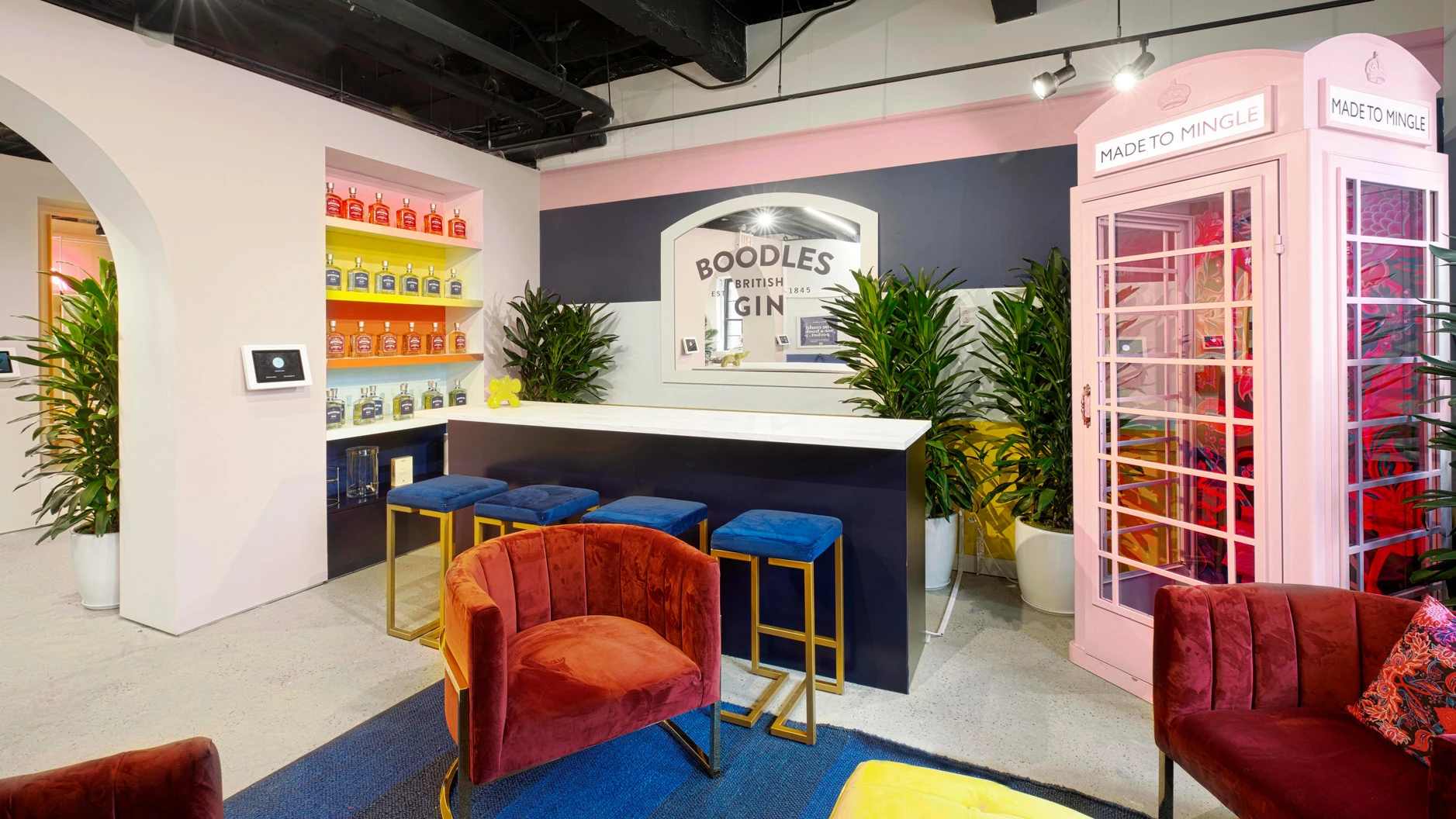
Hunt believes this is a significant mental shift on the part of the shopper. “I think the minute you go down a slide, you’ve already made the mental commitment to try something different and try something new,” she says. “And so you get to the bottom of that slide and you try this product. No longer is it that this person has to pass [Nuria’s] space, they have to opt in to do it, and then they have to have a great experience. You’re going to try the product. And what we’re seeing is what we always knew from their data: Once you try it, you want to purchase it because it’s so different.”
Another popular product from the House of Showfields—and a product I’m contemplating buying myself—is a sponge called Skura. If you saw it on a shelf or online, you wouldn’t get a sense of what’s different about it. But as I stood in the Showfields kitchen set as an actor explained the way it works—it’s laced with silver threads to kill bacteria, and the colored logos on the back of the sponge change color so you know when it’s too dirty to use—the product made perfect sense. The actor had introduced the product to us after we’d all tried a piece of a multivitamin made by the startup Gem; she was using the Skura sponge to wipe down the plate. There wasn’t much to see, since she was just washing a plate, but the opportunity gave her time to tell us about how Skura worked. It felt less like a sales pitch and more like a way to discover things that I might want to use in my life.
“It’s a very organic way for people to experience a product as opposed to just reading copy or being hit with a one-way advertisement,” says Brittany Brave, an actress who plays Amelia Showfields in another room of the house (the idea is that the character is such a superwoman, she’s already cloned herself). “This is one way that they can actually see in real time if it’s a product that really works in your life, and they see it through a lens of theater.”

Brave, who sits near the entrance to The Lab in Amelia Showfields’s bedroom, reports that while many people are taking photos as they go through the house, many others ignore their phones altogether and are swept up in the experience itself. And while House of Showfields might be Instagrammable, that’s not what the team is going for. “People really like to use this word. This word is forbidden in our company,” says Tal Zvi Nathanel, Showfields’s CEO and cofounder. While it’s not a bad thing for people to take pictures, he thinks that stores shouldn’t be designed purely for Instagram, but for people to have a good experience. Instead, Showfields is hoping that the stories behind the brands and the characters the team has created will give the fun, immersive show more depth than a flat Instagrammable wall. I have always shied away from that kind of retail, but because Showfields had something more to interact with, it felt more substantive. I noticed only a few people taking selfies as I wandered through—an indication that they were engaging more with the actors than Instagramming.
Hunt hopes to continue to change the experience to add more and more brands. That way, when someone walks into a room, they’ll have more choices for what products they can interact with and try out. The startup has bigger plans as well: Showfields is planning to open a second retail store, somewhere on the East Coast.
I wandered from Amelia Showfields’s bedroom and finally made it into The Lab, the spare room filled with all the products I’d just seen. There was the Skura sponge and the Nuria exfoliator, but in a more traditional retail setting. Seeing them sitting on the shelf was in stark contrast with the more engaging experience I’d just had. It was surprisingly easy to forget that the actors were ultimately trying to sell me something.
It’s unclear whether the novelty of Showfields’s retail Sleep No More will wear off. But compared to the frustrating, banal experience of browsing through products in a normal store, I’ll take the surprise of black-and-white-striped slides and actors dressed as kooky scientists any day.
Recognize your brand’s excellence by applying to this year’s Brands That Matter Awards before the early-rate deadline, May 3.
